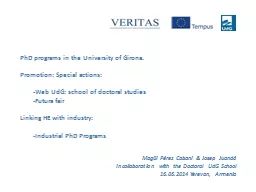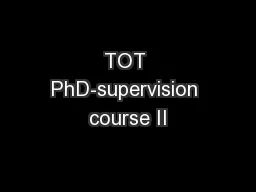PPT-Rendi Murphree, PhD
Author : ellena-manuel | Published Date : 2016-05-10
CDC Epidemic Intelligence Service Officer Tennessee Department of Health Council of State and Territorial Epidemiologists Annual Meeting June 13 2011 Characteristics
Presentation Embed Code
Download Presentation
Download Presentation The PPT/PDF document "Rendi Murphree, PhD" is the property of its rightful owner. Permission is granted to download and print the materials on this website for personal, non-commercial use only, and to display it on your personal computer provided you do not modify the materials and that you retain all copyright notices contained in the materials. By downloading content from our website, you accept the terms of this agreement.
Rendi Murphree, PhD: Transcript
Download Rules Of Document
"Rendi Murphree, PhD"The content belongs to its owner. You may download and print it for personal use, without modification, and keep all copyright notices. By downloading, you agree to these terms.
Related Documents














